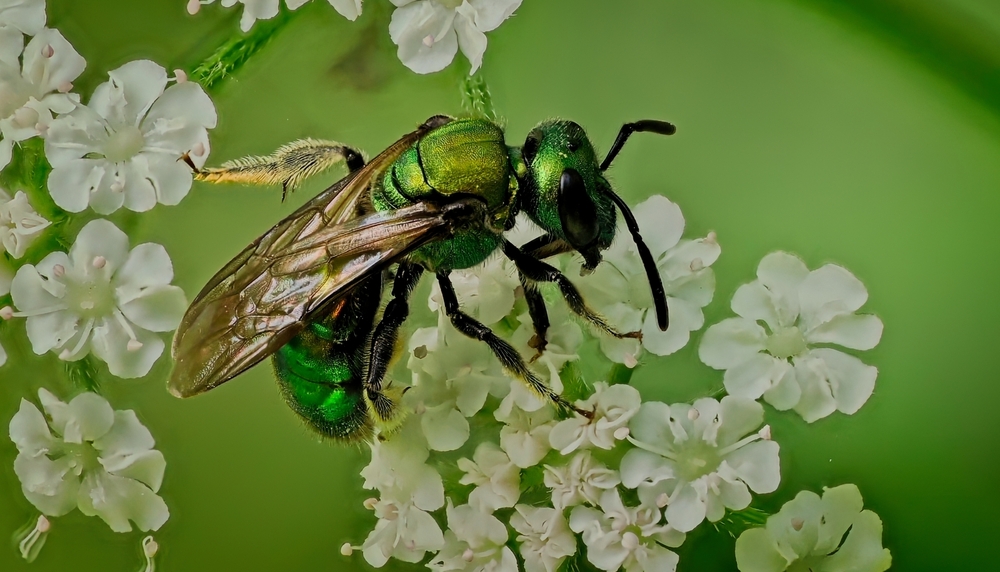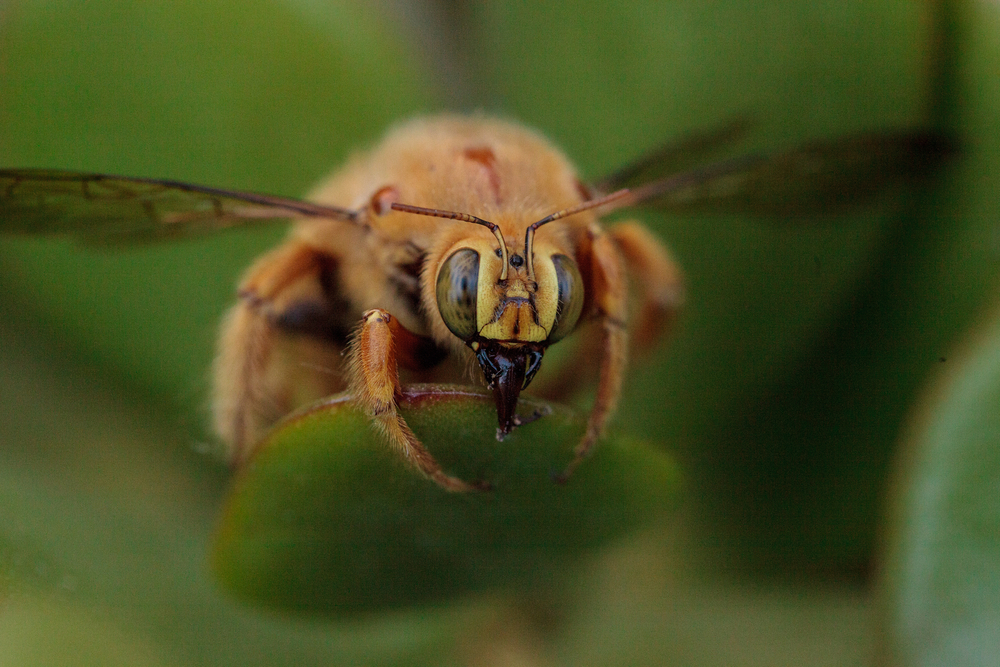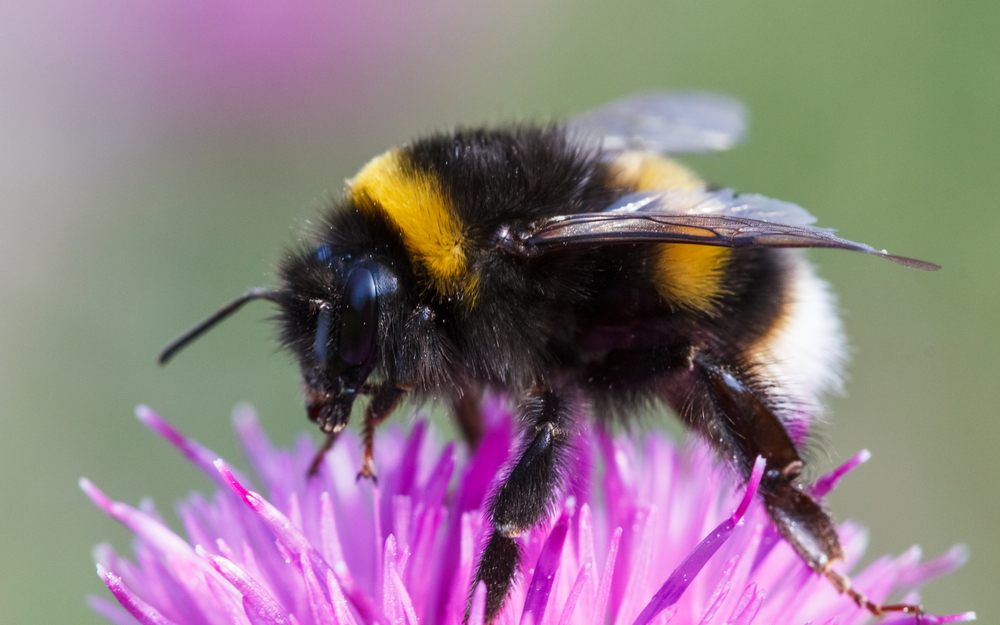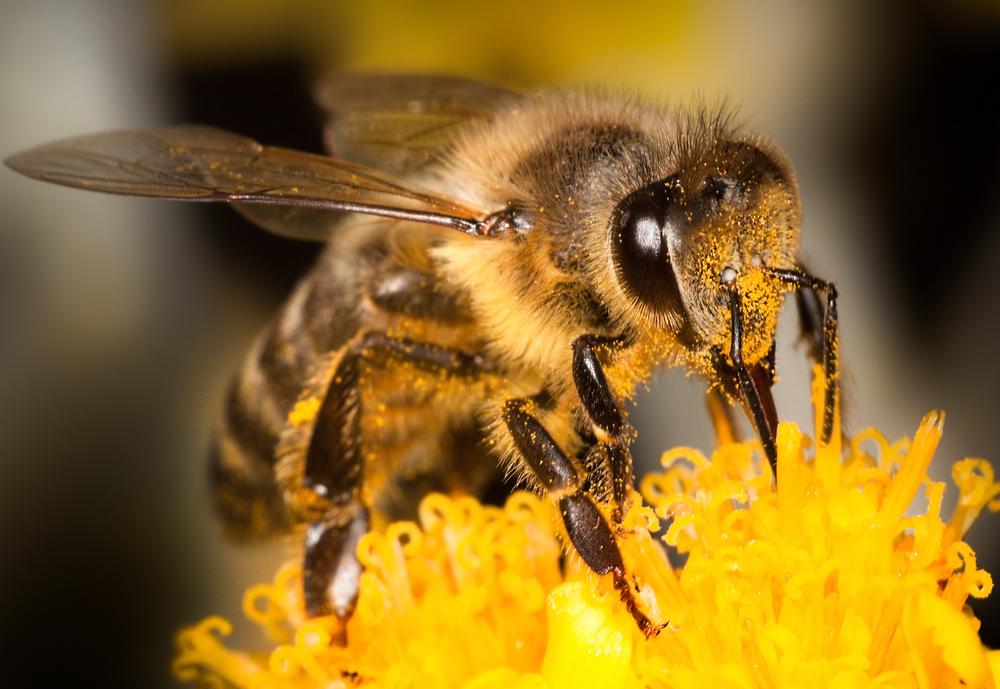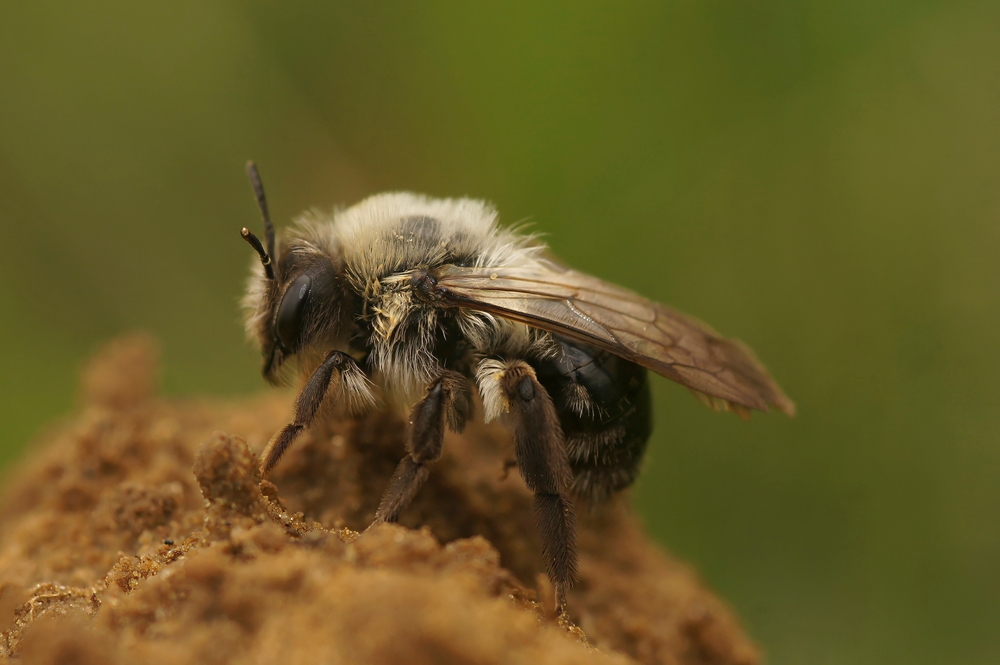Uniqueness
Sweat bees (family: Halictidae) are among the most ecologically adaptable and behaviorally diverse bees in the world. Their widespread distribution, iridescent appearance, and social flexibility make them stand out within the pollinator community.
Metallic Beauty:
Many sweat bees are known for their striking metallic coloration, with iridescent shades of green, blue, gold, or copper. These vivid hues make them among the most visually distinctive native bees, especially in North America.
Attraction to Human Sweat:
Sweat bees are unique for their attraction to salt, especially from human perspiration. This trait is most common in males, which often land on human skin to lap up sweat. Though this behavior is harmless, it’s rare among bees and gives the group its common name.
Solitary to Social Flexibility:
Unlike strictly solitary or eusocial bees, many sweat bee species exhibit social plasticity—the ability to shift between solitary and eusocial lifestyles depending on environmental conditions like temperature or season length. This makes them a key model for studying the evolution of social behavior in insects.
Understudied Yet Abundant:
Sweat bees are among the most abundant native bees in many regions, yet they are often overlooked in favor of more familiar species like honeybees and bumblebees. Despite their numbers, their diversity and ecological contributions remain underappreciated.
Broad Habitat Tolerance:
Sweat bees can be found in gardens, meadows, deserts, forest edges, and even urban spaces. Their ability to thrive in both natural and disturbed environments demonstrates remarkable ecological resilience.
Effective Pollinators:
Sweat bees are highly effective pollinators of both native wildflowers and agricultural crops. Their small size allows them to pollinate flowers that are inaccessible to larger bees, and their frequent visits to a wide range of plants make them key contributors to biodiversity.
Bioindicators of Ecosystem Health:
Because sweat bees are sensitive to pesticides, habitat loss, and soil disturbance, their presence and population trends are used as indicators of environmental health and pollinator-friendly landscapes.
Sweat bees’ blend of vibrant appearance, behavioral versatility, and ecological importance makes them both fascinating and essential. Their unique role bridges the gap between wild pollinators and human-modified environments, making them ambassadors of native bee diversity.



































































